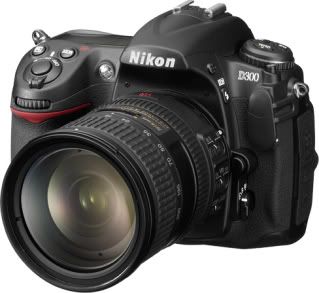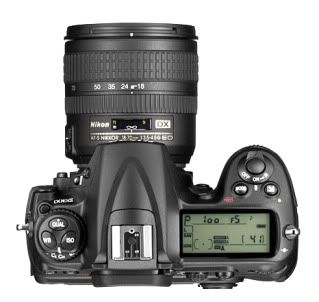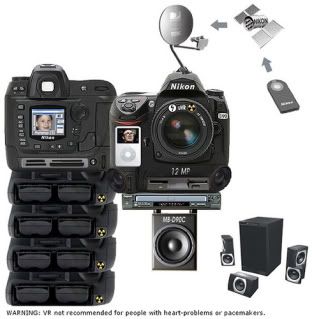
Nikon's D300 is a photographer's camera. There are no Scene modes, not even a Green Auto mode to make the camera do it all for you. As such, the flash doesn't have a mode where it pops up automatically. But if you know what you're doing, there's plenty that the Nikon D300 will do for you. It'll adjust your ISO, find detail in the shadows, and track your subject even when it's not in the autofocus area.
There are a few limitations to what it can do compared to what we heard when the Nikon D300 was first announced. For example, though it has 14-bit A/D conversion available in RAW mode for significantly more color information in each image file, the frame rate slows down from 6.13 frames per second in 12-bit mode to 2.66 seconds in 14-bit mode. That doesn't happen with the D3, nor the Canon 40D (though the 40D is only 10 megapixels instead of the D300's 12.3). And though the Nikon D300 has 51 autofocus points like the Nikon D3, it is much slower at acquiring focus than the D3 is when in Auto-area AF. It's also slower than the competition, whose AF includes considerably fewer points.
 But these aren't reasons to discount the Nikon D300, which is one of the most capable and well-designed digital SLRs made. Like the D200 did, the Nikon D300 continually surprises me. When I encounter a new situation that requires a new setting or mode, I just take a look at the back and top of the D300 and usually find my answer readily available. Granted, in the beginning there were a few times when I just decided to make do with other settings rather than delve into the comprehensive menu system. Later I found the solution after a little investigation, but it's clear that there's a bit of learning curve to using the Nikon D300. Indeed, the Nikon D300's manual is almost twice as thick, with just over double the pages of the D200's: 421 pages compared to 210.
But these aren't reasons to discount the Nikon D300, which is one of the most capable and well-designed digital SLRs made. Like the D200 did, the Nikon D300 continually surprises me. When I encounter a new situation that requires a new setting or mode, I just take a look at the back and top of the D300 and usually find my answer readily available. Granted, in the beginning there were a few times when I just decided to make do with other settings rather than delve into the comprehensive menu system. Later I found the solution after a little investigation, but it's clear that there's a bit of learning curve to using the Nikon D300. Indeed, the Nikon D300's manual is almost twice as thick, with just over double the pages of the D200's: 421 pages compared to 210.I'll try to hit on a lot of the Nikon D300's major points, but this is just the User Report, so there's not as much room or time as this significant digital SLR camera deserves. For more of the in-depth detail, see the many tabs and sub-tabs which include pages of detail and analysis. We've taken hundreds of shots with the Nikon D300, and you're welcome to download, tweak, and print any of them for your own individual camera research purposes.
by Shawn Barnett
credit to : imaging resource


 RSS Feed (xml)
RSS Feed (xml)